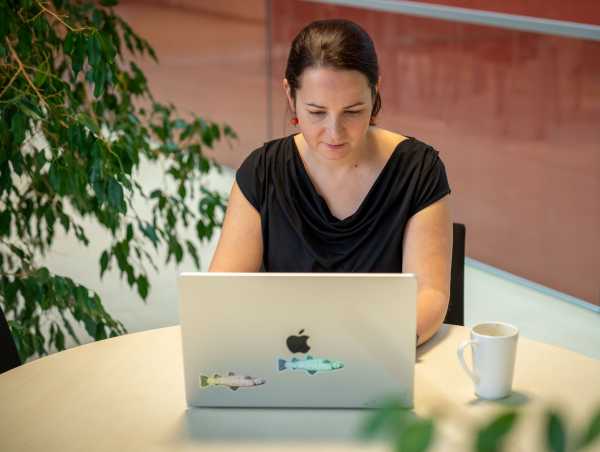For those who don't know you: Who is Barbora Trubenová?
I studied Physics and Biology in Slovakia. I then went to the University of Manchester in the UK to do my PhD. Later, I followed my partner to the US, but I couldn't work there because I didn't have a visa. I then applied for a post-doctoral position in Vienna and stayed five years as a post-doctoral fellow. I came here to ETH in the middle of the pandemic and did another postdoc. As a researcher, I changed subjects quite a lot. I started as a physicist, then moved to the evolution of altruism and evolutionary algorithms. And when I came here, I started working on the problem of evolution, and I really like it! So I applied for an SNF fellowship. Since September 2024, I have been an Assistant Professor of Pathogen Evolution at Eawag and in the Department of Environmental Systems Science (D-USYS).
What is your research area?
My research focuses on the mathematical modelling of how drug resistance evolves and spreads in pathogens. Bacteria, parasitic worms and fungi all evolve resistance to drugs we use to treat them. Because they are exposed to the drugs, they mutate and the best ones survive, developing resistance. We are using mathematical modelling to determine the speed of this process and how it is influenced by factors such as drug dosing and environmental factors. At the moment, we are focusing on specific aspects, such as how many sets of different chromosomes theses organisms have, or how they live or reproduce. Some clone, some reproduce sexually. Some live as a biofilm, some freely. By studying how they live, we can gain insights into disease evolution.
What is your research plan?
Our idea is to develop one big model that we can alter using different kinds of modules that we plug together. We can model different organisms depending on what we put together. These organisms differ significantly, so a one-size-fits-all model is not an option. But we can construct a single, comprehensive model comprising numerous modules, allowing for the accurate representation of various pathogens. This model will enable us to model different types of bacteria, or something completely different, for example, parasitic worms. We will have one general model that can be adapted as needed. In order to parameterize these models, we are collecting a lot of data from the internet. And these information is very difficult to find. So we are trying to build a database encompassing as much data as possible. We also want to create some very specific predictions which can be tested experimentally with our collaborators.



